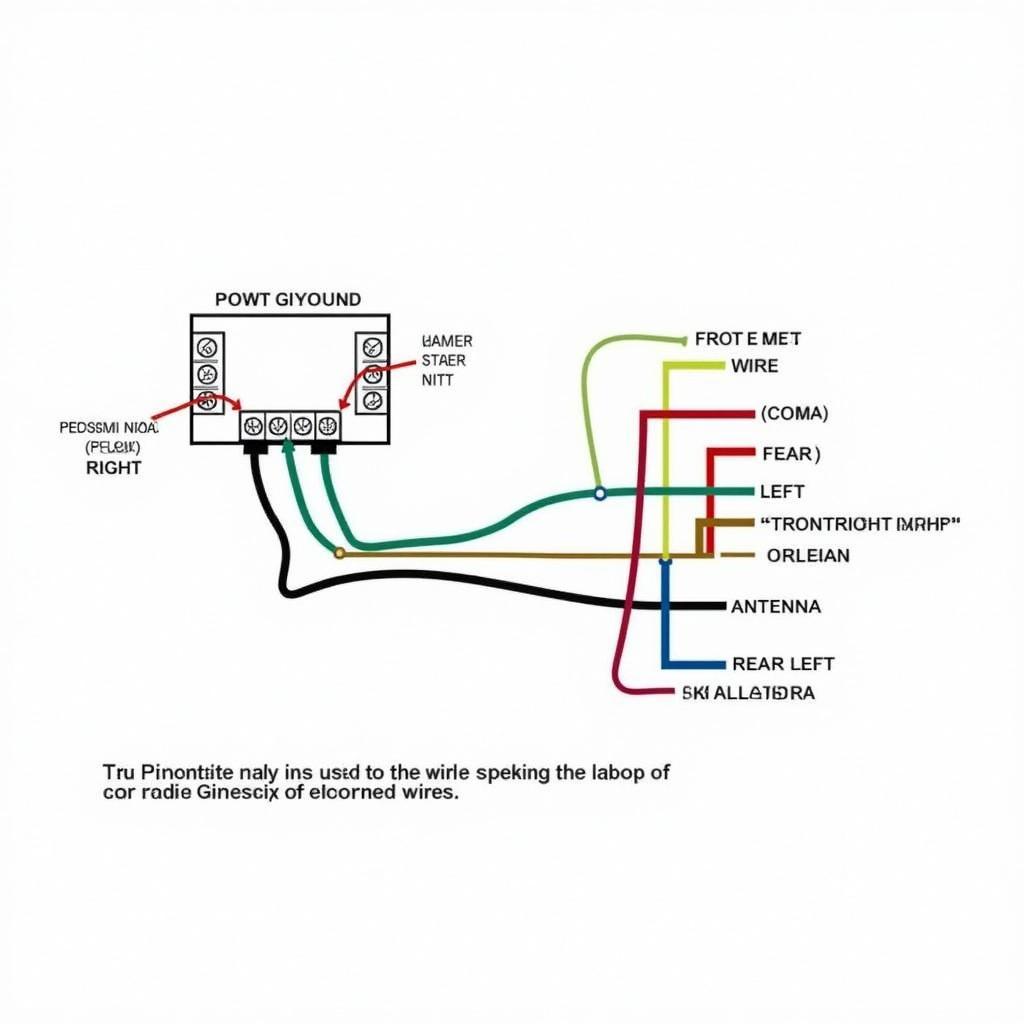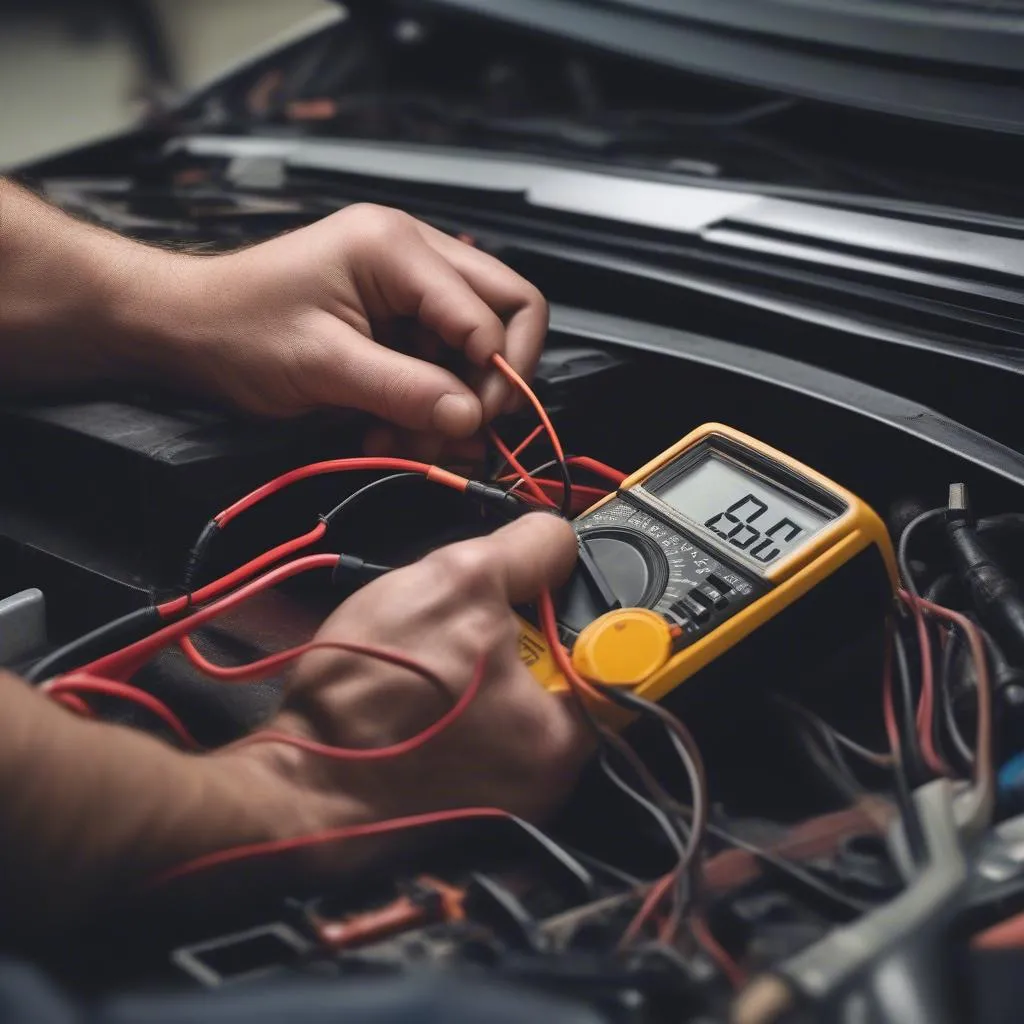The brake warning light on your dashboard is a crucial safety feature that should never be ignored. It signals a potential issue within your braking system, requiring immediate attention. Understanding what triggers this warning light can help you take the appropriate action and stay safe on the road.
While many drivers associate the brake warning light with low brake fluid, it can actually indicate several issues. Here’s a comprehensive guide on the possible causes and what you should do when your brake warning light illuminates.
Common Causes of a Brake Warning Light
1. Low Brake Fluid
One of the most common reasons your brake warning light illuminates is low brake fluid. This fluid is essential for applying pressure to your brakes and slowing or stopping your vehicle. 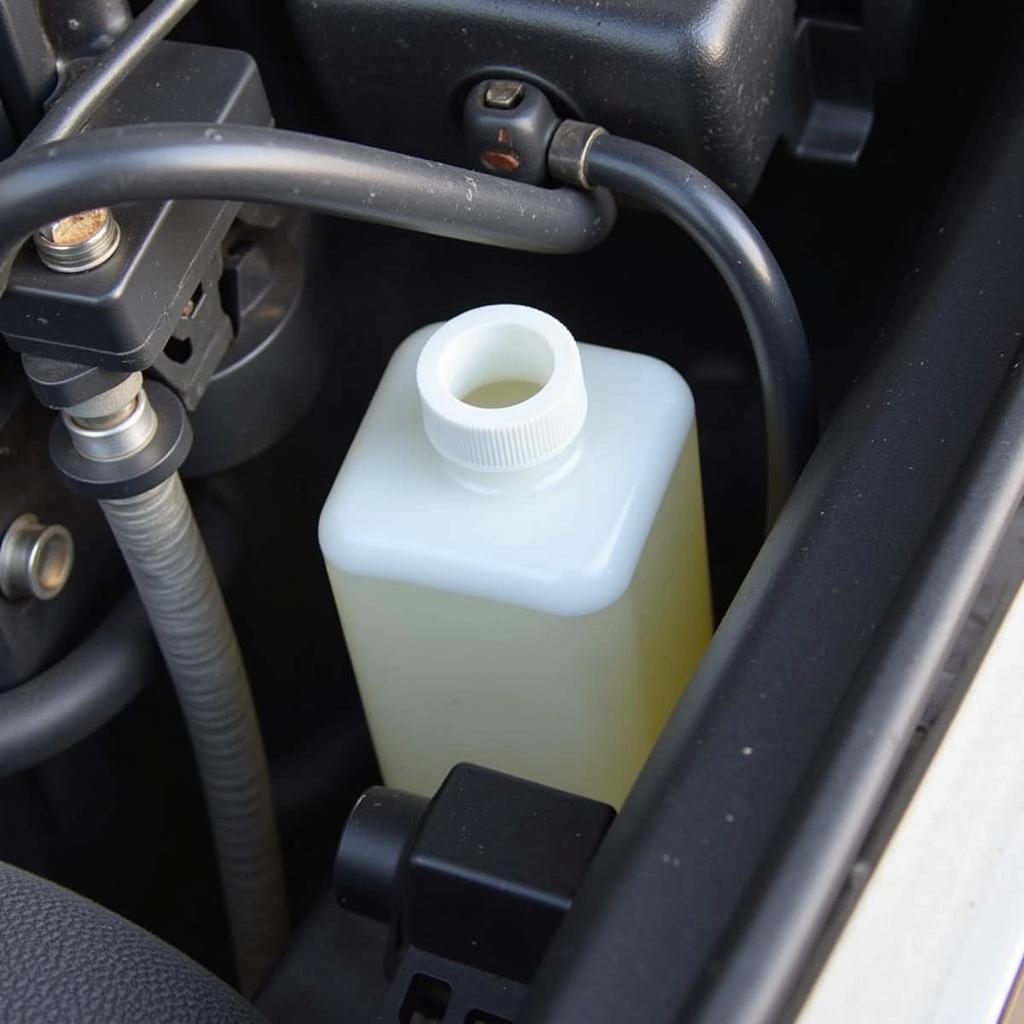 Low brake fluid reservoir A leak in the braking system can lead to a drop in brake fluid levels, compromising braking performance.
Low brake fluid reservoir A leak in the braking system can lead to a drop in brake fluid levels, compromising braking performance.
2. Worn Brake Pads
Your brake pads are designed to wear down over time. When they become too thin, the brake warning light can activate. This warning system is usually triggered by a sensor in the brake pad itself. Worn brake pads 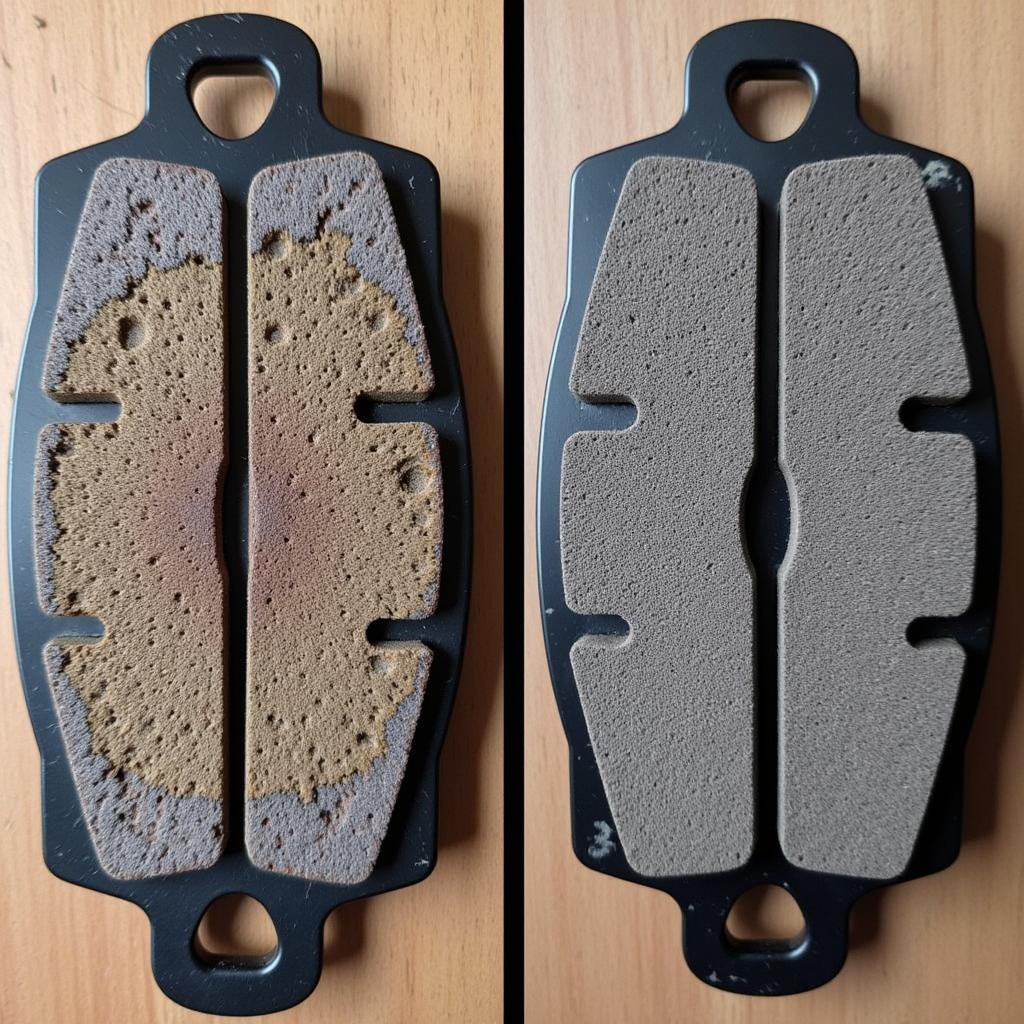 Worn brake pads comparison not only impact braking efficiency but can also damage your rotors, leading to costly repairs.
Worn brake pads comparison not only impact braking efficiency but can also damage your rotors, leading to costly repairs.
3. Malfunctioning ABS System
Modern vehicles are equipped with an Anti-lock Braking System (ABS) for improved control during hard braking. If the ABS module detects a fault within the system, it can trigger the brake warning light. 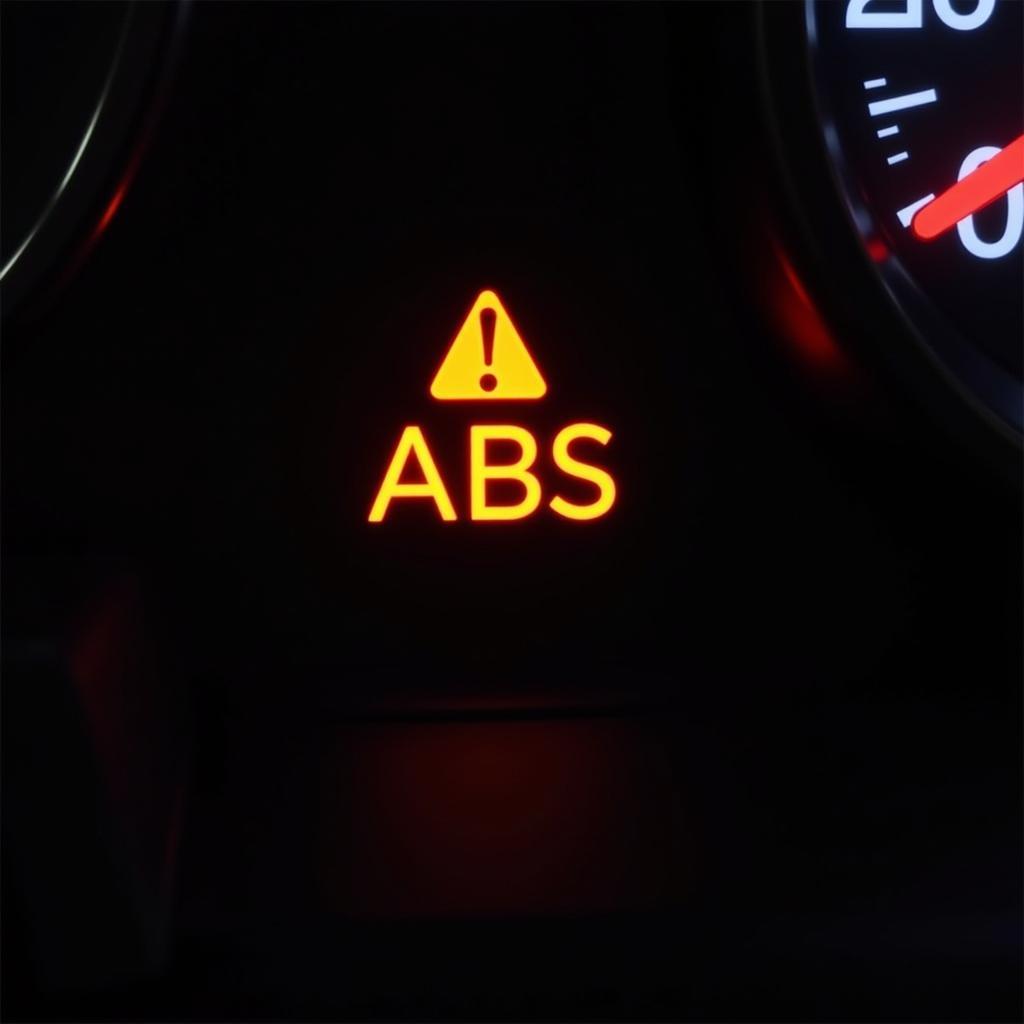 ABS Warning Light This could be due to a faulty sensor, damaged wiring, or a problem with the ABS pump.
ABS Warning Light This could be due to a faulty sensor, damaged wiring, or a problem with the ABS pump.
4. Parking Brake Engaged
While it might seem obvious, sometimes the brake warning light is simply a reminder that your parking brake is engaged. Always double-check your parking brake before driving, as driving with it engaged can lead to premature wear and tear.
What to Do When Your Brake Warning Light Turns On
1. Don’t Panic: First and foremost, stay calm.
2. Assess the Situation: Carefully evaluate your surroundings and determine if it’s safe to pull over immediately.
3. Check Your Parking Brake: Ensure that your parking brake is fully disengaged.
4. Safely Pull Over: If the light remains on, find a safe location to park your vehicle as soon as possible.
5. Check Your Brake Fluid: With the engine off and the vehicle parked on a level surface, carefully open the hood and inspect the brake fluid level in the reservoir. what does the brake system warning light or gauge indicate If the level is low, it indicates a leak that needs immediate attention.
6. Avoid Driving: Driving with a compromised braking system is extremely dangerous.
7. Contact a Qualified Mechanic: Whether it’s a simple brake fluid top-up or a more complex ABS issue, seeking professional help is crucial for a safe and reliable repair.
Remote Diagnostics and Software Solutions for Brake Issues
In today’s technologically advanced world, remote diagnostics and software solutions are becoming increasingly popular for addressing car troubles. Instead of immediately heading to a mechanic, drivers can opt for remote diagnostics to identify the root cause of the brake warning light. This can be particularly helpful in determining if the issue is software or hardware-related.
For instance, if the problem lies within the ABS module, a software update or recalibration might be possible through remote programming. This eliminates the need for physical visits to a repair shop, saving time and potentially reducing repair costs. However, it’s essential to remember that remote solutions may not be suitable for all brake issues. Severe problems like fluid leaks or worn brake components still necessitate hands-on inspection and repair by a qualified mechanic.
Expert Insight: “Remote diagnostics are becoming increasingly powerful tools for diagnosing brake system issues,” says John Miller, Senior Automotive Engineer at CarTech Solutions. “However, it’s important to remember that they are most effective when used in conjunction with a thorough visual inspection by a trained technician.”
The Importance of Regular Brake Maintenance
Prevention is always better than cure, and this adage holds true for your car’s braking system. Regular maintenance is crucial for ensuring optimal braking performance and preventing unexpected issues.
Here are a few maintenance tips to keep in mind:
-
Brake Fluid Flush: Aim to flush your brake fluid every two years or as recommended by your vehicle manufacturer. This helps prevent corrosion and maintain optimal fluid viscosity.
-
Brake Pad Inspection: Have your brake pads inspected annually or whenever you notice any signs of wear, such as squeaking or grinding noises during braking.
-
Brake Rotor Inspection: While brake pads typically wear out faster, it’s also essential to inspect the rotors for warping or excessive wear during brake pad replacements.
Expert Insight: “Regular brake system inspections are not just about safety, but also about cost savings in the long run,” says Sarah Thompson, Lead Mechanic at AutoCare Center. “Catching potential issues early can prevent more expensive repairs down the line.”
By adhering to a regular maintenance schedule and promptly addressing any warning lights, you can ensure the longevity and reliability of your braking system, keeping yourself and others safe on the road.
Conclusion
The brake warning light is a crucial safety feature in your vehicle, and ignoring it can have serious consequences. While it often indicates low brake fluid, it can also point to other issues like worn brake pads or problems with your ABS system. If your brake warning light comes on, 2014 audi a8 red brake warning light it’s vital to pull over safely and avoid driving until the problem is diagnosed and repaired by a qualified mechanic. Regular brake maintenance is crucial for preventing unexpected brake issues and ensuring your safety on the road.
FAQs
1. Can I drive with the brake warning light on?
It’s highly discouraged to drive with the brake warning light on. It signifies a potential problem with your brakes, compromising your ability to stop safely.
2. Is it expensive to fix a brake warning light issue?
The repair cost depends on the underlying cause. Simple issues like low brake fluid are relatively inexpensive to fix, while more complex problems like ABS module replacements can be costly.
3. How often should I check my brake fluid?
It’s recommended to check your brake fluid level at least once a month and top it up if necessary.
4. Can worn brake pads cause the brake warning light to come on?
Yes, most modern vehicles have wear sensors in the brake pads that trigger the warning light when the pads become too thin.
5. Can I add any type of brake fluid to my car?
No, using the incorrect type of brake fluid can damage your braking system. Refer to your owner’s manual for the recommended brake fluid type and specifications.


